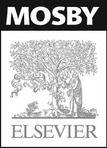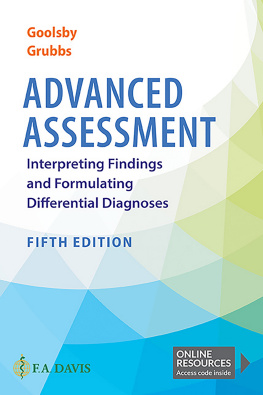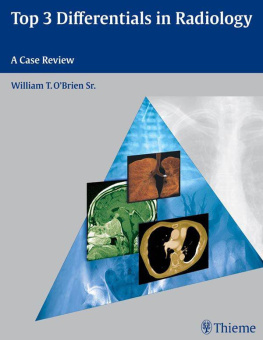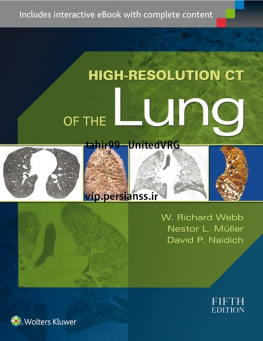Mosbys Physical Examination Handbook
Seven Edition
Henry M. Seidel, MD
Professor Emeritus of Pediatrics, The Johns Hopkins University, School of Medicine, Baltimore, Maryland
Jane W. Ball, RN, DrPH, CPNP, DPNAP
Trauma Systems Consultant, American College of Surgeons, Gaithersburg, Maryland
Joyce E. Dains, DrPH, JD, RN, FNP-BC, DPNAP
Advanced Practice Nursing Program Director, The University of Texas, M. D. Anderson Cancer Center, Houston, Texas
John A. Flynn, MD, MBA, FACP, FACR
Clinical Director and Professor of Medicine, Division of General Internal Medicine, The Johns Hopkins University, School of Medicine, Baltimore, Maryland
Barry S. Solomon, MD, MPH
Assistant Professor of Pediatrics, Medical Director, Harriet Lane Clinic, Division of General Pediatrics and Adolescent Medicine, The Johns Hopkins University, School of Medicine, Baltimore, Maryland
Rosalyn W. Stewart, MD, MS, MBA
Assistant Professor of Pediatrics and Medicine, Department of Internal Medicine and Pediatrics, The Johns Hopkins University, School of Medicine, Baltimore, Maryland
Mosby
Front Matter
Mosbys PHYSICAL EXAMINATION HANDBOOK
S eventh E dition
Henry M. Seidel, MD Professor Emeritus of Pediatrics, The Johns Hopkins University, School of Medicine, Baltimore, Maryland
Jane W. Ball, RN, DrPH, CPNP Trauma Systems Consultant, American College of Surgeons, Gaithersburg, Maryland
Joyce E. Dains, DrPH, JD, RN, FNP-BC, NAP Advanced Practice Nursing Program Director, The University of Texas, MD Anderson Cancer Center, Houston, Texas
John A. Flynn, MD, MBA, FACP, FACR Clinical Director and Professor of Medicine, Division of General Internal Medicine, The Johns Hopkins University, School of Medicine, Baltimore, Maryland
Barry S. Solomon, MD, MPH Assistant Professor of Pediatrics, Medical Director, Harriet Lane Clinic, Division of General Pediatrics and Adolescent Medicine, The Johns Hopkins University, School of Medicine, Baltimore, Maryland
Rosalyn Stewart, MD, MS, MBA Assistant Professor, Department of Internal Medicine and Pediatrics, The Johns Hopkins University, Baltimore, Maryland

Copyright

3251 Riverport Lane
St. Louis, Missouri 63043
Mosbys Physical Examination Handbook ISBN: 978-0-323-06540-5
2011, 2006, 2003, 1999, 1995 by Mosby, Inc., an affiliate of Elsevier Inc. All rights reserved.
No part of this publication may be reproduced or transmitted in any form or by any means, electronic or mechanical, including photocopying, recording, or any information storage and retrieval system, without permission in writing from the publisher. Details on how to seek permission, further information about the Publishers permissions policies and our arrangements with organizations such as the Copyright Clearance Center and the Copyright Licensing Agency, can be found at our website: www.elsevier.com/permissions.
Notices
Knowledge and best practice in this field are constantly changing. As new research and experience broaden our understanding, changes in research methods, professional practices, or medical treatment may become necessary.
Practitioners and researchers must always rely on their own experience and knowledge in evaluating and using any information, methods, compounds, or experiments described herein. In using such information or methods, they should be mindful of their own safety and the safety of others, including parties for whom they have a professional responsibility.
With respect to any drug or pharmaceutical products identified, readers are advised to check the most current information provided (i) on procedures featured or (ii) by the manufacturer of each product to be administered to verify the recommended dose or formula, the method and duration of administration, and contraindications. It is the responsibility of practitioners, relying on their own experience and knowledge of their patients, to make diagnoses, to determine dosages and the best treatment for each individual patient, and to take all appropriate safety precautions.
To the fullest extent of the law, neither the Publisher nor the authors, contributors, or editors, assume any liability for any injury and/or damage to persons or property as a matter of products liability, negligence or otherwise, or from any use or operation of any methods, products, instructions, or ideas contained in the material herein.
International Standard Book Number 978-0-323-06540-5
Executive Publisher: Robin Carter
Developmental Editor: Deanna Dedeke
Publishing Services Manager: Anne Altepeter
Senior Project Manager: Cheryl A. Abbott
Designer: Charlie Seibel
Printed in China
Last digit is the print number: 9 8 7 6 5 4 3 2 1

Preface
Mosbys Physical Examination Handbook, seventh edition, is a portable clinical reference on physical examination that is suitable for students of nursing, medicine, chiropractic, osteopathic, and other allied health disciplines, as well as for practicing health care providers. It offers brief descriptions of examination techniques and guidelines on how the examination should proceed, step by step. This handbook is intended to be an aid to review and recall the procedures of physical examination. It cannot, because of its brevity, describe the specific techniques of history taking by organ system.
The handbook begins with an outline of what information should be obtained for the patients medical history and review of systems. Subsequent chapters for each of the body systems list equipment needed to perform the examination and present the techniques to be used. Expected and Unexpected Findings follow the description of each technique, presented in distinctive color type for easy recognition. Numerous illustrations interspersed throughout the text reinforce techniques and possible findings.
Each chapter offers Aids to Differential Diagnosis and also provides Sample Documentation, which is focused on a specific complaint to illustrate good documentation practice. Subjective Data and Objective Data are now clearly differentiated for each abnormality in the Aids to Differental Diagnosis section of each chapter in the seventh edition.
As in previous editions, separate chapters give an overview of the entire examination for all adults; for healthy females; and for infants, children, and adolescents. Pediatric Variations are highlighted in each body systems chapter. The final chapter gives guidelines for Reporting and Recording findings.
New to this edition is an appendix on Pain Assessment Tools, including the Numeric Pain Intensity Scale, the Visual Analogue Scale, and the Wong/Baker FACES Rating Scale.
Henry M. Seidel, Jane W. Ball, Joyce E. Dains, John A. Flynn, Barry S. Solomon, Rosalyn W. Stewart
CHAPTER 1 The History
BUILDING THE HISTORY
The following outline of a patient history is a guideline and should not be considered a rigid structure. You are beginning your relationship with the patient at this point. Take care with this relationship. The information you gain in the history loses meaning if your bond with the patient is less than strong. Choose a comfortable setting and help the patient get settled. Maintain eye contact and use a conversational tone. Begin by introducing yourself and explaining your role. Help the patient understand why you are building the history and how it will be used. Explore positive responses with additional questions: Where, when, what, how, and why. Be sensitive to the patients emotions at all times. Avoid confrontation and asking leading questions.







